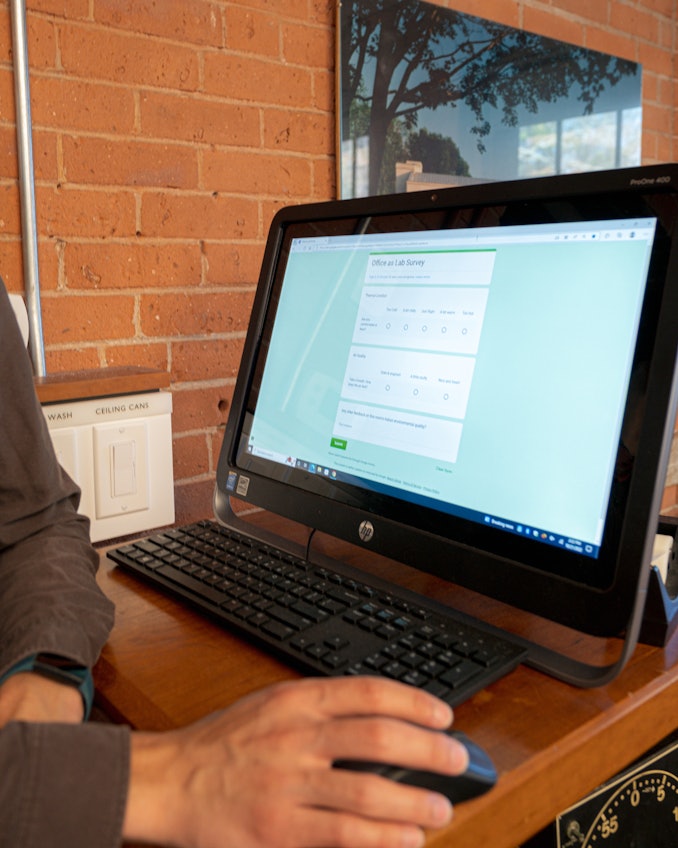Sensing Our Way Toward a Greener Office
We love working in Centerbrook’s adapted mill complex that has evolved since the early 1700’s. You can call our old brick factory many things: rustic, charming, historic, beloved … but, built before insulation and air barriers, it is not energy efficient. From rooftop solar panels to a submerged cooling loop in the Mill Pond, we’ve tested green innovations here for years to reduce our environmental footprint. Now, equipped with the latest building science technologies, we’re exploring how we can make energy efficiency and air quality improvements while maintaining our building’s historic character.
We’re starting small, designating a conference room, with three walls and roof interfacing with the exterior envelope, as our pilot “Office as Lab” space. There we’ll test interventions that we hope to apply across the office and for clients in New England who own historic buildings like ours.
This summer, with the help of Virginia-based Senseware, we wired the new conference room/lab with sensors that quantify existing conditions and, eventually, will measure the impacts of our interventions. As we replace the HVAC system with an efficient all-electric heat pump, add an energy recovery ventilation system, upgrade leaky single-pane windows, and install low off-gassing finishes, we hope to see big improvements in these metrics. Read on to learn about the parameters we’re tracking and what we hope to learn!


Heating and Cooling Energy: As we track the energy used for heating and cooling before and after our interventions, we’ll know, down to a watt-hour, the energy, and by extension, their operating cost implications.
Temperature: We installed ambient and radiant temperature sensors. We hope to learn how the varying temperatures of the lab’s south and north walls affect occupant thermal comfort.
Humidity: Humidity in the 40-60% range is most comfortable and reduces respiratory virus transmission. We will test whether air tightening, mechanical humidification, and a living plant wall will raise wintertime humidity levels while preventing condensation.
Carbon Dioxide: Studies indicate reduced cognitive performance when CO2 levels rise above 500ppm. We’ll test an efficient energy recovery ventilation system, before making envelope upgrades to air-tighten the space, and see if it makes occupants more perky and alert!
Volatile Organic Compounds (VOCs): We know that overexposure to VOCs causes respiratory irritation, headaches, and other adverse effects. We’ll test how plants and an improved ventilation system might reduce their concentration.
Particulates: We installed a sensor to measure airborne dust, which we notice increases when the air conditioning runs. We hope to fix this with better filtration and diffuser positioning.
Ozone: We’d like to understand how much ground-level ozone pollution leaks into our space, and whether it reaches advisory levels on the worst days.
Air Speed: As we look toward replacing the air handling system, we want to understand how the air speed and diffuser location are influencing occupant comfort and conditioning of the room’s surfaces.
Survey: We can’t relate all these numbers to occupants’ actual experience without the results from a thermal comfort survey they complete after using the room. Since we launched the lab in early summer, respondents have been almost evenly split between feeling comfortable and a bit chilly. A majority indicated that the air feels stuffy, which we hope to address.
Stay tuned for updates as we begin to transform our lab into a greener, healthier space!
We're using cookies to deliver you the best user experience. Learn More




